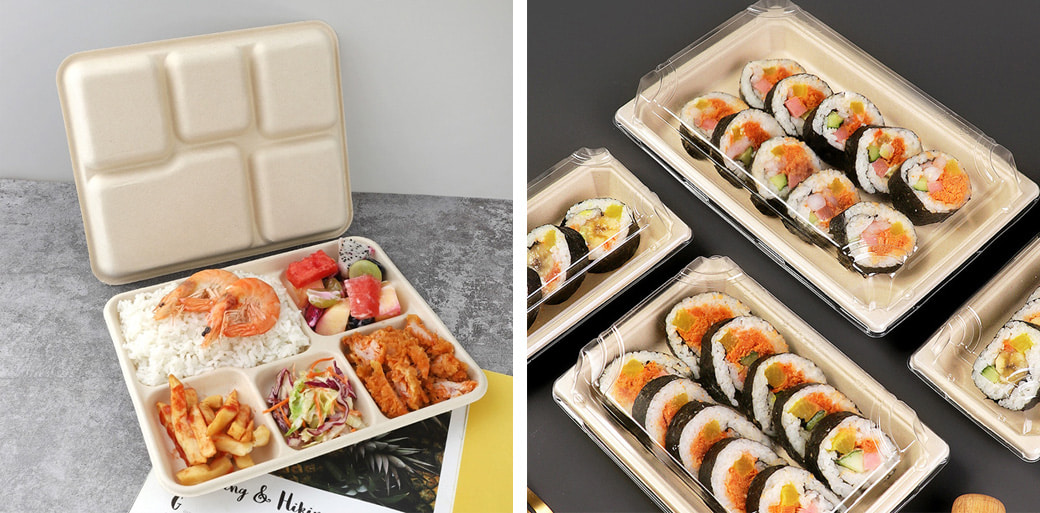In a world increasingly conscious of environmental sustainability, many people are looking for eco-friendly alternatives to everyday products. One area gaining significant attention is disposable tableware, particularly plates and trays made from sugarcane. These sustainable products not only reduce our reliance on plastics but also provide a host of environmental and practical benefits. Let’s explore why sugarcane plates and trays are becoming a popular choice for individuals, businesses, and event planners alike.

What Are Sugarcane Plates and Trays?
Sugarcane plates and trays are made from bagasse, the fibrous byproduct left after extracting juice from sugarcane stalks. Bagasse has historically been considered waste, but innovative manufacturing processes have turned it into a valuable material for making sturdy, biodegradable, and compostable products.
The Process
After extracting sugar, the leftover sugarcane fibers are pulped, pressed into molds, and dried to create durable plates, trays, and other disposable tableware. This process is not only efficient but also helps reduce waste in sugar production. Bagasse-based products are typically made with little to no chemical additives, which makes them safer for the environment compared to petroleum-based plastics or Styrofoam.

Why Choose Sugarcane Plates and Trays?
1. Eco-Friendly and Biodegradable
One of the biggest advantages of using sugarcane plates and trays is their eco-friendliness. These products are 100% biodegradable and compostable, meaning they break down naturally into the environment without leaving toxic residues. Unlike plastic or Styrofoam, which can take hundreds of years to decompose, sugarcane-based products decompose within months in commercial composting facilities.
2. Renewable Resource
Sugarcane is a renewable resource, making it a more sustainable option compared to fossil fuels used in plastic production. Sugarcane crops are typically grown in tropical and subtropical climates and can be harvested multiple times a year. By repurposing bagasse, we not only utilize an abundant resource but also reduce the environmental impact of waste disposal from sugar production.
3. Durable and Heat Resistant
Sugarcane plates and trays are surprisingly durable. They can withstand hot foods and liquids without losing their shape or leaking, making them ideal for serving both hot and cold meals. Some products can even be safely used in microwaves and freezers, offering the versatility required in many catering or food service environments.
4. Safer and Healthier
Many plastic and Styrofoam products contain harmful chemicals like BPA or styrene, which can leach into food and cause health problems over time. Sugarcane-based tableware is free from such toxins, making it a healthier alternative, especially for serving food to children, families, and customers.
5. Customizable for Aesthetic Appeal
Aside from their practical benefits, sugarcane plates and trays can also be designed to look aesthetically pleasing. Whether you're hosting an eco-friendly event or operating a sustainable restaurant, these products can be customized with various shapes and sizes, adding an element of style to your dining experience.
The Environmental Benefits of Using Sugarcane Tableware
Switching to sugarcane plates and trays offers several environmental advantages beyond just waste reduction:
1. Reducing Plastic Waste
One of the most pressing environmental challenges today is plastic pollution. By choosing sugarcane tableware, we can significantly reduce the amount of single-use plastics that end up in landfills and oceans. Since sugarcane products decompose quickly, they don't contribute to long-term pollution.
2. Lower Carbon Footprint
The production of sugarcane-based plates and trays generates fewer greenhouse gases compared to plastic production. This is because sugarcane absorbs carbon dioxide from the atmosphere as it grows, helping to offset emissions. Moreover, since bagasse is a byproduct of sugar production, its use requires minimal additional energy.
3. Promoting Circular Economy
Sugarcane tableware is a perfect example of a circular economy in action. By transforming agricultural waste into useful products, we’re reducing the need for virgin resources and minimizing the environmental impact of both sugar production and waste disposal. When these products are composted after use, they return nutrients to the soil, closing the loop on sustainability.

